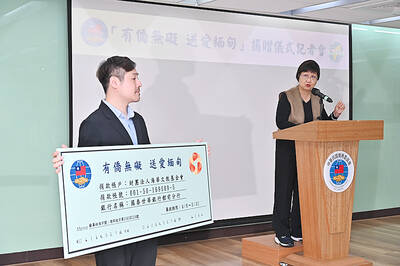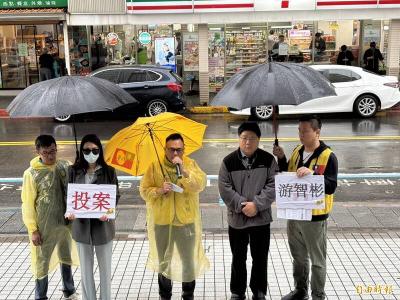Buddhist Master Hsing Yun (星雲), the founder of Fo Guang Shan (佛光山) Monastery, suffered an acute stroke last weekend, but is in a stable condition after surgery on Monday, the Kaohsiung Chang Gung Memorial Hospital said yesterday.
Hsing Yun experienced vomiting, fatigue and weakness in his limbs on Saturday before being hospitalized on Sunday, when doctors determined that he had suffered a stroke in the left side of his brain and arranged for him to undergo surgery.
The 90-year-old Buddhist monk has a history of “the three highs” — high blood sugar, high blood pressure and high blood lipid — as well as heart disease and diabetes, and was hospitalized at the same hospital twice in 2011 for an ischemic stroke.
“There was a blood clot about the size of a fist, and fortunately it was mainly in the intraventricular, so it does less damage to brain cells,” Chang Gung Memorial Hospital honorary superintendent Chen Chao-long (陳肇隆) said yesterday.
He said doctors detected a blood clot during an examination and suggested that immediate surgery be performed on Monday. After a three-hour surgery to remove the blood clot, Hsing Yun was moved into an intensive care unit for observation.
“We were able to remove his inserted tubes about 65 minutes after the surgery,” Chen said. “The whole surgery went very successfully.”
The hospital said that after Hsing Yun regained consciousness, he asked if he could return to Fo Guang Shan to preach, but his medical team said it was better for him to stay in the intensive care unit for further observation, adding that his condition yesterday was relatively stable.
Chen said people with the “three highs” should pay special attention to their daily diet, exercise regularly and get regular follow-up examinations at a hospital to control their medical conditions.

Taiwan is stepping up plans to create self-sufficient supply chains for combat drones and increase foreign orders from the US to counter China’s numerical superiority, a defense official said on Saturday. Commenting on condition of anonymity, the official said the nation’s armed forces are in agreement with US Admiral Samuel Paparo’s assessment that Taiwan’s military must be prepared to turn the nation’s waters into a “hellscape” for the Chinese People’s Liberation Army (PLA). Paparo, the commander of the US Indo-Pacific Command, reiterated the concept during a Congressional hearing in Washington on Wednesday. He first coined the term in a security conference last

A magnitude 4.3 earthquake struck eastern Taiwan's Hualien County at 8:31am today, according to the Central Weather Administration (CWA). The epicenter of the temblor was located in Hualien County, about 70.3 kilometers south southwest of Hualien County Hall, at a depth of 23.2km, according to the administration. There were no immediate reports of damage resulting from the quake. The earthquake's intensity, which gauges the actual effect of a temblor, was highest in Taitung County, where it measured 3 on Taiwan's 7-tier intensity scale. The quake also measured an intensity of 2 in Hualien and Nantou counties, the CWA said.

The Overseas Community Affairs Council (OCAC) yesterday announced a fundraising campaign to support survivors of the magnitude 7.7 earthquake that struck Myanmar on March 28, with two prayer events scheduled in Taipei and Taichung later this week. “While initial rescue operations have concluded [in Myanmar], many survivors are now facing increasingly difficult living conditions,” OCAC Minister Hsu Chia-ching (徐佳青) told a news conference in Taipei. The fundraising campaign, which runs through May 31, is focused on supporting the reconstruction of damaged overseas compatriot schools, assisting students from Myanmar in Taiwan, and providing essential items, such as drinking water, food and medical supplies,

New Party Deputy Secretary-General You Chih-pin (游智彬) this morning went to the National Immigration Agency (NIA) to “turn himself in” after being notified that he had failed to provide proof of having renounced his Chinese household registration. He was one of more than 10,000 naturalized Taiwanese citizens from China who were informed by the NIA that their Taiwanese citizenship might be revoked if they fail to provide the proof in three months, people familiar with the matter said. You said he has proof that he had renounced his Chinese household registration and demanded the NIA provide proof that he still had Chinese